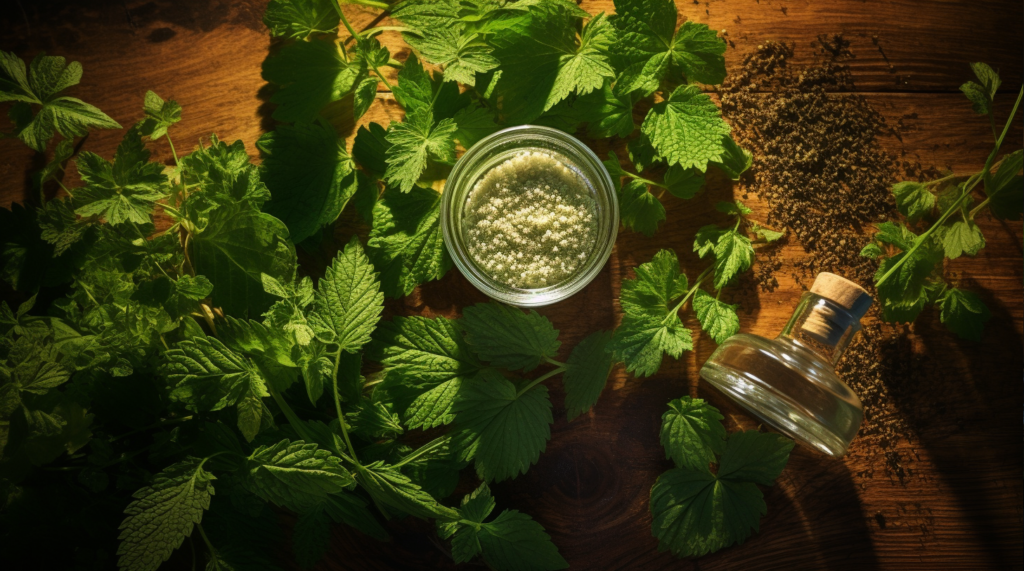Evading Seasonal Illnesses: Natural Approaches to Respiratory Health
The transition from summer to fall is a period of splendid transformation. However, with this shift comes heightened vulnerability to certain health challenges, particularly respiratory conditions. For those keen on health and staying active, understanding these challenges and potential remedies is invaluable. Delving deeper into the natural remedies for two prevalent conditions – Chronic Obstructive Pulmonary Disease (COPD) and Asthma – let’s explore specific ingredients believed to offer relief.
Chronic Obstructive Pulmonary Disease (COPD)
COPD, a collective term for several lung diseases, including chronic bronchitis and emphysema, is characterized by increasing breathlessness. Prolonged exposure to irritating gases or particulate matter, often from cigarette smoke, is the primary cause. COPD damages the air sacs and airways in the lungs, making it progressively more difficult to breathe1.
Natural Ingredients and COPD:
- Quercetin: Quercetin is a naturally-occurring flavonoid in many fruits and vegetables. Its antioxidant properties might help in neutralizing the free radicals in the lungs, which contribute to COPD[^1^]. However, high doses may cause headaches and tingling in the arms and legs. Always consider the correct dosage and potential interactions, especially with antibiotics and blood pressure medications2.
- Nettle Leaf: Traditionally, nettle leaf has been used to relieve respiratory symptoms, primarily due to its antihistamine properties[^2^]. Potential side effects include stomach upset, fluid retention, or sweating. It’s also crucial to note that nettle can interfere with some medications, such as blood thinners, blood pressure medications, and diuretics3.
- Boswellia Extract: Renowned for its anti-inflammatory properties, Boswellia might help reduce lung inflammation in COPD patients[^3^]. Potential side effects include stomach pain, nausea, and diarrhea. Those on medications for acid reflux or immune suppressants should consult with a healthcare professional before taking Boswellia4.

Asthma
Asthma is a condition wherein the airways become inflamed, narrow, and swell, leading to shortness of breath, coughing, and wheezing. The condition can be exacerbated by allergens, cold air, exercise, or respiratory infections5.
Natural Ingredients and Asthma:
- Butterbur Extract: Butterbur has shown promise in reducing asthma symptoms[^4^]. The compound petasin present in it potentially reduces spasms in lung smooth muscles. However, raw butterbur plants contain substances called pyrrolizidine alkaloids (PAs), which can be harmful, so always opt for PA-free products. Butterbur may interact with medications for allergy, cancer, and some antifungals6.
- Vitamin D: Correcting a Vitamin D deficiency in individuals with asthma can optimize the anti-inflammatory effects of corticosteroids, a common asthma medication[^5^]. However, excessive vitamin D can cause calcium buildup, leading to heart rhythm problems. Those on diuretics or digoxin should be cautious and maintain regular check-ups7.
- Additional Remedies: Ginger has been traditionally used as an anti-inflammatory agent and might aid in asthma relief. Omega-3 fatty acids, found in fish and flaxseed, can also reduce inflammation and potentially aid in respiratory health8.
In conclusion, the natural world offers a plethora of ingredients that might assist in managing respiratory conditions. However, it’s paramount to ensure these remedies complement and don’t conflict with prescribed treatments. COPD and asthma are severe conditions, and self-medication without professional consultation can be risky. Always prioritize a holistic approach, combining lifestyle, natural remedies, and medical treatments to maintain optimal respiratory health.
Footnotes
- Global Initiative for Chronic Obstructive Lung Disease. (2020). GOLD Reports ↩
- Harwood, M., Danielewska-Nikiel, B., Borzelleca, J.F., Flamm, G.W., Williams, G.M., & Lines, T.C. (2007). A critical review of the data related to the safety of quercetin and lack of evidence of in vivo toxicity, including lack of genotoxic/carcinogenic properties. Food and Chemical Toxicology, 45(11), 2179-2205. ↩
- University of Maryland Medical Center. (2015). Stinging Nettle ↩
- Ammon, H.P. (2016). Boswellic acids and their role in chronic inflammatory diseases. Advances in experimental medicine and biology, 928, 291-327. ↩
- Asthma UK. (2019). What is Asthma? ↩
- Anderson, N., Meier, T., & Borlak, J. (2009). Toxicogenomics applied to in vitro hepatotoxicity testing. Recent Patents on DNA & Gene Sequences, 3(1), 41-51. ↩
- Mayo Clinic. (2017). Vitamin D toxicity: What if you get too much? ↩
- Horrobin, D.F. (1990). Omega-3 fatty acids in asthma. Proceedings of the Nutrition Society, 49(2), 295-301. ↩








